Recent Articles
Popular Makes
Body Types
2017 Ford Transit Road Test and Review
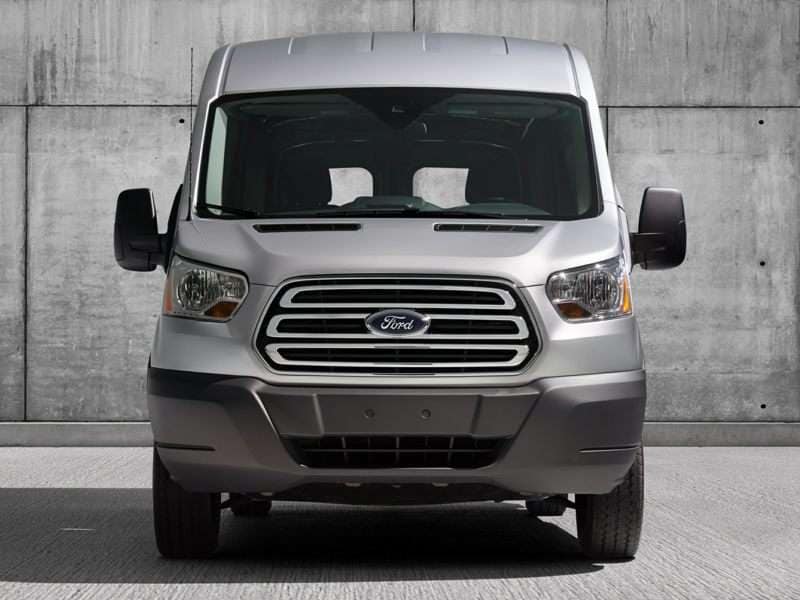
2017 Ford Transit front grille ・ Photo by Ford
If you live in Europe, you've probably seen enough Ford Transits to last you until the stars fall out of the sky, but the Transit is a new phenomenon for us in the U.S. For years, Ford sold the Econoline (later known as the E-series) in the States and the Transit everywhere else, but the Transit has recently gotten its green card—and that's good news for folks who buy and drive vans.
Finally: A Modern Van
The Ford Econoline fullsize van (later known simply as the E-Series) was, for years, both the babe and the bane of van drivers everywhere. With simple engineering rooted in the 1960s, the E-Series was as simple as a screwdriver, but it had cramped footwells and was offered in a limited number of body sizes. So why did Ford keep the E alive for so long? An obscure law called the Chicken Tax (no, seriously—read about it here) slaps a huge tariff on imported light trucks. As a result, the Domestic Three haven't had much competition, so rather than bring innovative designs like the Transit over from Europe, they just kept selling us the same-old same-old. All that changed several years back when Mercedes started bringing the Sprinter van to the U.S., and Chrysler got back into the van business with the innovative Fiat-designed ProMaster. Ford decided it was finally time to get with the program, and now van buyers benefit from availability of the all-new Transit.
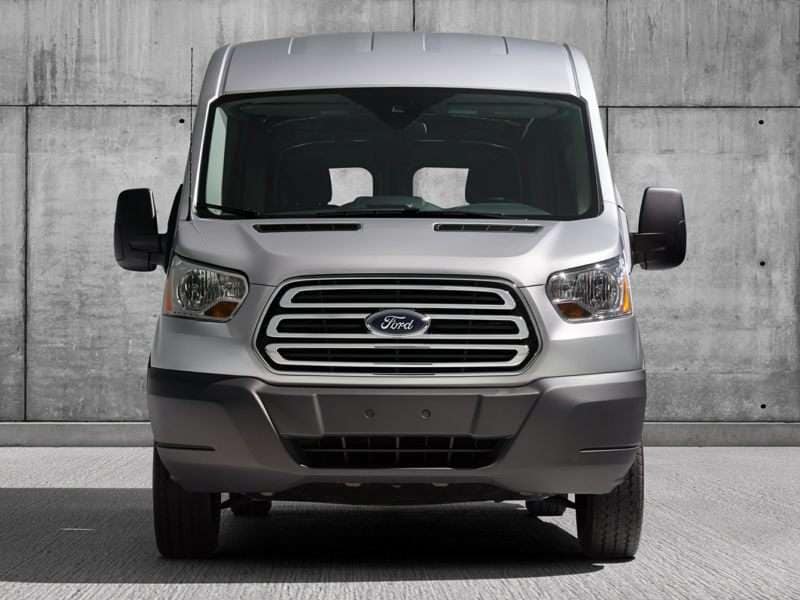
Photo by Ford
Changes, Changes, Changes
Why is the Transit so much better than the old Econoline? A multitude of reasons. Let's start with driver comfort. Old-fashioned vans have a “doghouse”—a housing for their big V8 engine that crowds the driver and passenger footwells and brings heat and noise into the cabin. The Transit was designed for smaller engines, and indeed Ford offers a choice of 5- and 6-cylinder engines (more on that in a bit) and no V8. That means the Transit can pack its engine into a relatively small nose that does little to impede the van's maneuverability. Ford has kept the big center console with its storage trays and big cupholders—if there was one upside to the doghouse, it gave you a place to put things—but now storage space is its primary goal, and there are less mechanical bits under the dash and therefore more room to shift your feet around. And if that center console looks like it’ll get in the way, worry not—for 2017 Ford has added an optional low-profile console that makes it easier to get from the front seats to the back of the van.
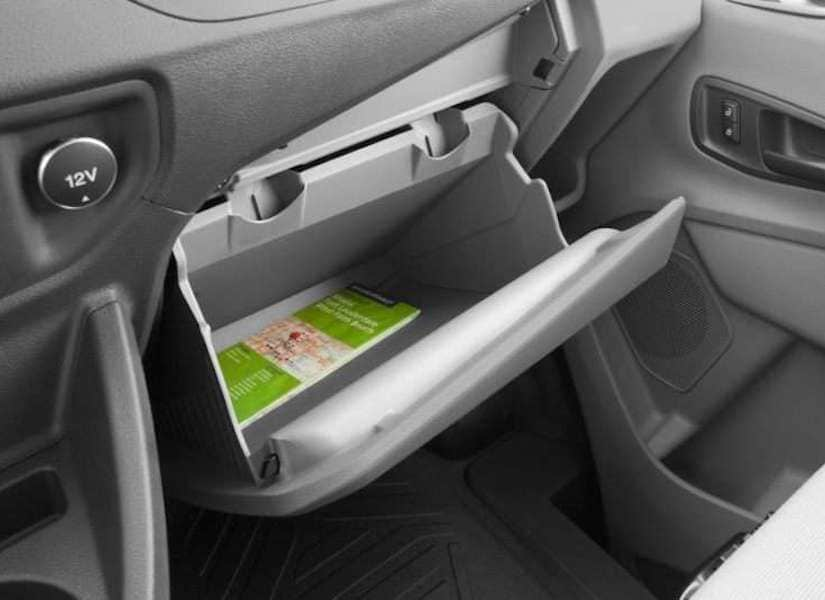
Photo by Ford
A Nice Place to Work
Having been designed in Europe, the 2017 Ford Transit has a dashboard far more modern than what we were used to from the old E. Calling the interior high-rent would be a stretch; the plastics and fabrics of are designed for long-term durability rather than visual appeal, but the shape of the dash is pleasing to the eye and the layout looks rather like what you'd find in Ford's latest passenger cars. There's plenty of storage space and since commercial jobs often involve a second person, the passenger is not ignored, with a big cupholder and easy access to the climate controls. The view out through the Transit's big windows is a nice plus for the passenger.

Photo by Ford
More Choices...
Another advantage to the Transit over the old E is flexibility. The old Econoline was offered in two wheelbase lengths and three weight ratings (150 half-ton, 250 three-quarter ton and 350 one-ton), and that was it. Not the Transit: You can get it in several sizes, the smallest not much bigger than a midsize SUV and the largest not much smaller than a garage. Once again, there are three capacity ratings (150, 250 and 350), but now there are more choices: Two wheelbases, three lengths, and three roof heights, with the largest models getting dual rear wheels out back.
Ford offers cargo models as well as passenger wagons with seating capacity for up to 15. Ford offers options for either a sliding or hinged side doors, with an option for cargo doors on both sides of the van. Out back, the hinged barn doors can be folded back to the sides of the van, allowing for easy curb-side loading or the use of a loading dock.
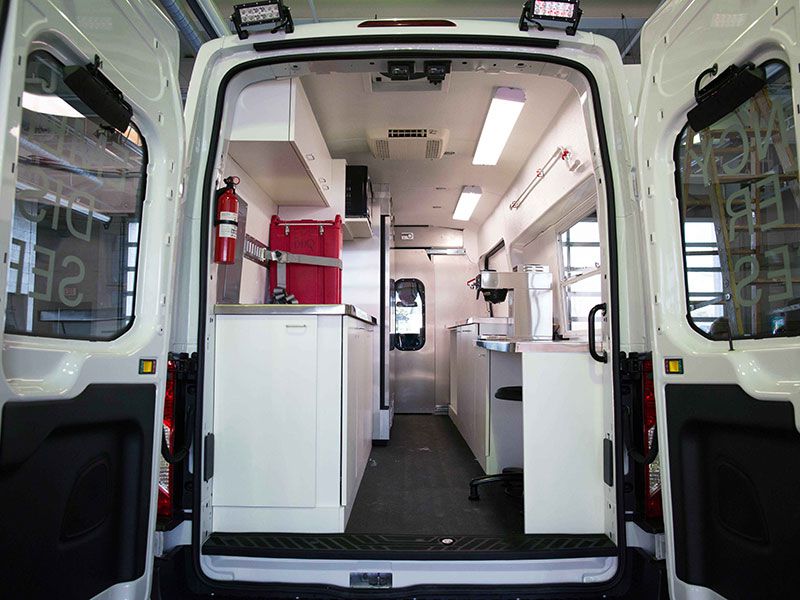
Photo by Ford
...And More Capacity
The old E-series van offered a maximum cargo capacity of 278 cubic feet, and the Transit blows that out of the water: Even the smallest Ford Transit, a 150 model with a short wheelbase and low roof, can haul 246.7 cubic feet of cargo, while the long-wheelbase extended-length high-roof model nearly doubles that capacity to 487.3 cubic feet. Maximum payload varies not just with the size of the van, but with the powertrain and other equipment; cargo models range from 3140 lb. up to 4,590 lb., numbers that, once again, best the old E-series. Towing capacity ranges from 3400 lb. up to 7500 lb., again dependent on how the van is equipped. (Ford has detailed payload and towing charts; if you plan to tow or haul heavy cargo, or tow with a passenger van, be sure to consult them to make sure the van you pick can safely do the job.)
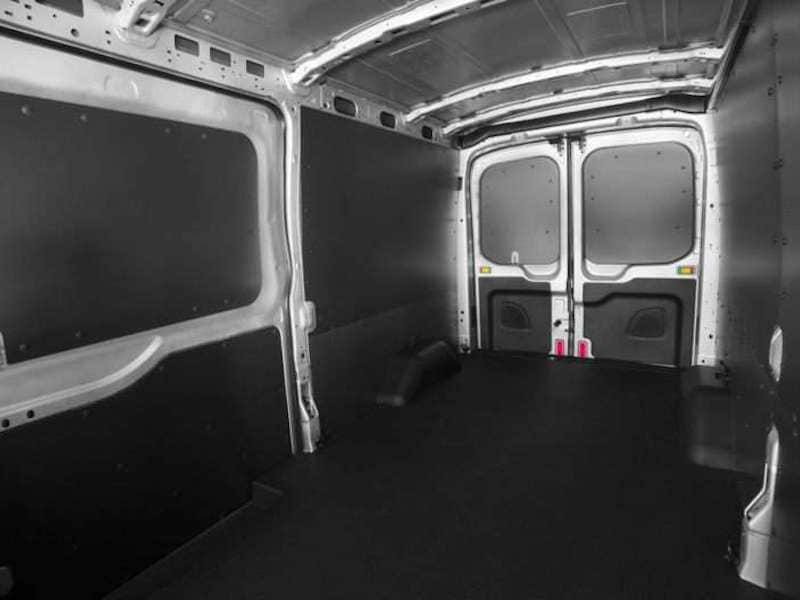
Photo by Ford
Engine Choices
Ford offers three engines for the Transit, and none of them have eight cylinders. The base engine is a 3.7-liter V6 tuned for 275 horsepower and 260 lb.-ft. of torque. Optional is a 3.5-liter EcoBoost V6, which uses two turbochargers to boost power to 310 horsepower and 400 lb.-ft. of torque. Ford uses this engine as a substitute for a V8 in their F-150 pickup truck, and it does the same job in the Transit.
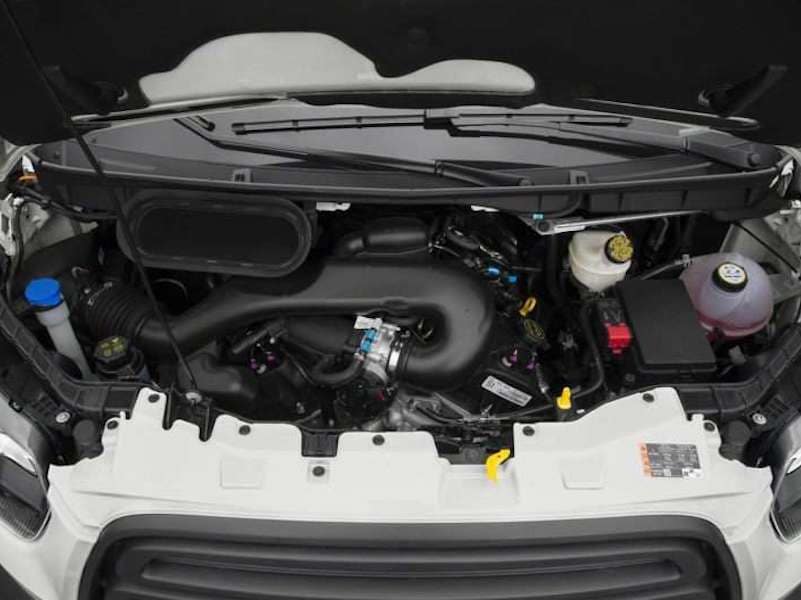
Photo by Ford
Power Stroke Diesel
The Transit we drove for this Autobytel review has the optional Power Stroke turbodiesel. No, this isn’t the big V8 Power Stroke found in the old E-series; instead it’s a 3.2 liter 5-cylinder diesel (yep, you read that right, five cylinders) designed by Ford’s European division. It develops 185 horsepower and 350 lb.-ft. of torque. All three engines drive the Transit’s rear wheels through a 6-speed automatic transmission. (Geeky trivia: Over in Europe, Ford sells the Transit in rear-wheel-drive, front-wheel-drive, and all-wheel-drive forms. While we wouldn’t expect to see the front-drive Transit here—though the competing Ram Promaster does employ FWD—the AWD system would be a great addition, and we’d love to see it come to the States.)
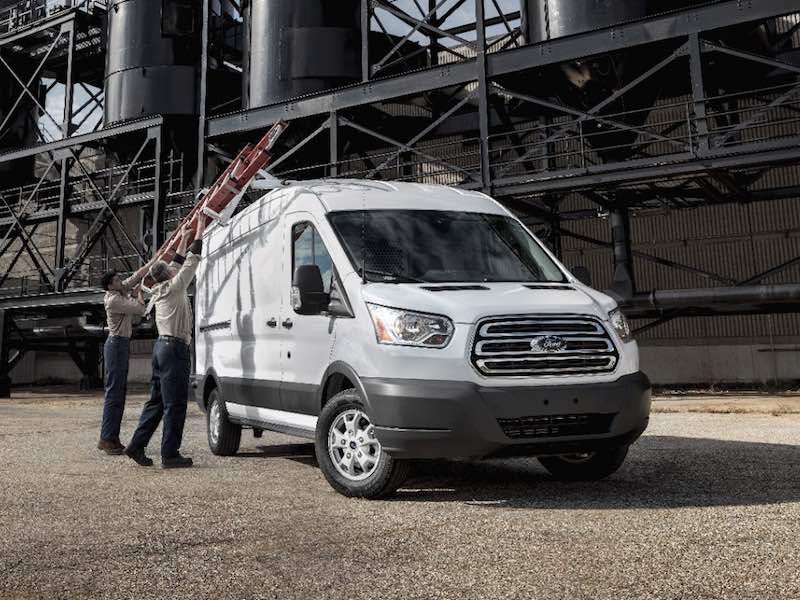
Photo by Ford
Ford Transit: On The Road
On the road, the 2017 Ford Transit is more pleasant than you might expect, especially if you’re used to driving an E-series or other traditional American van. Outward vision is excellent, and the seating position is better than that of the Ram ProMaster. The steering is more carlike, though if you try to swerve, you’ll know in a heartbeat you’re driving a van. We liked the acceleration from the diesel engine, though it’s noisier than the diesel in the Mercedes Sprinter. Maneuverability is fantastic—the Transit was designed to snake its way through narrow European cities, and it turns sharply and parks (relatively) easily.
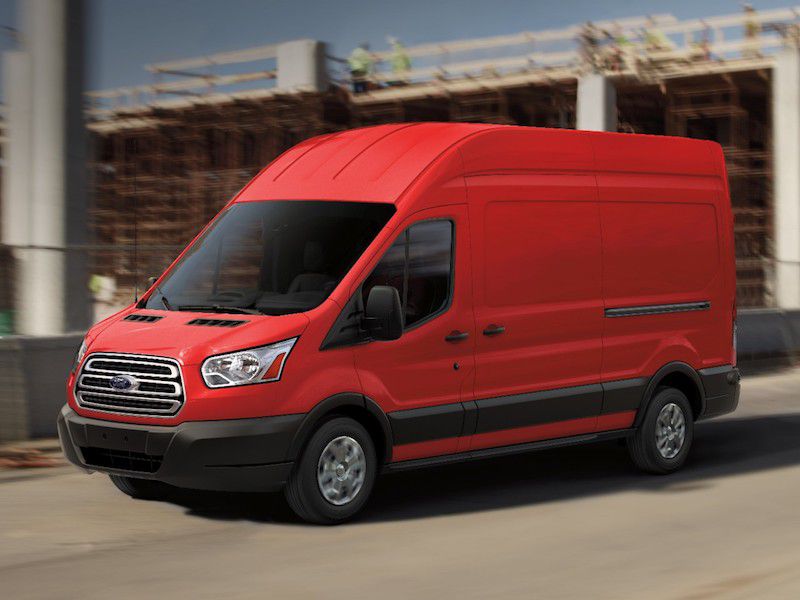
Photo by Ford
Transit Pricing
The Transit’s $32,805 starting price (including destination charge) is quite a bit higher than the competing Ram ProMaster, which undercuts it by about $1800, though it’s worth noting that the entry-level ProMaster is a slightly smaller van with less carrying capacity. Mercedes introduced a new entry-level version of the Sprinter, called the Worker, to compete against the Ram and Ford vans. Its starting price is $33,490, but keep in mind that the Sprinter comes standard with diesel power; if you want the Transit with a diesel engine, you’re looking at spending $37,950. (Diesel ProMasters start at $36,305.) If you’re looking to haul passengers, the 8-seat Ford Transit Passenger Wagon starts at $35,560.
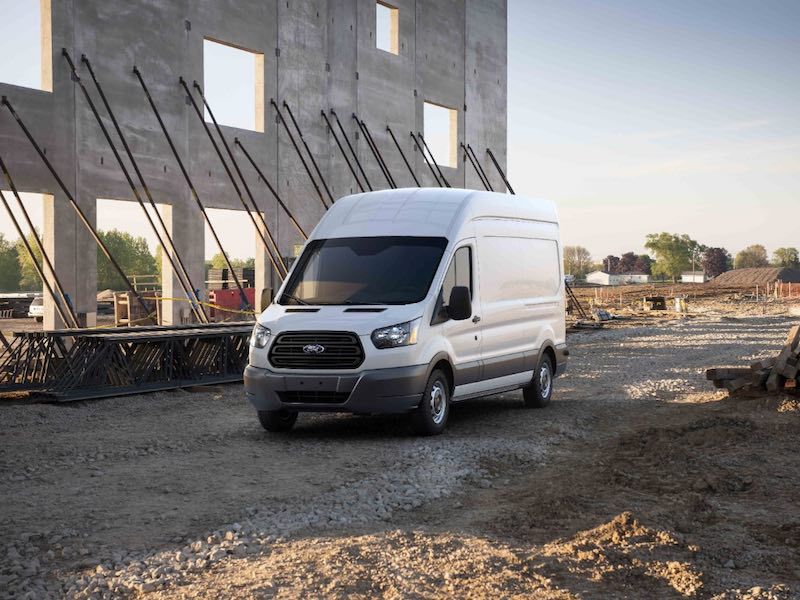
Photo by Ford
Ford vs. The Competition
Experienced vanners will agree with us that the Ford Transit is a great addition to the fullsize van market. Compared to the Ram ProMaster, the Transit has a better seating position for the driver and a better diesel powertrain, and its EcoBoost V6 offers more power than the ProMaster’s non-turbo gas V6. The Sprinter is quieter, but it doesn’t offer a variant as compact as the Transit 150, nor does it offer the option of gasoline power. And the Sprinter can get very expensive when you pile on the options, though the Transit is certainly no shrinking violet when it comes to price. General Motors is still offering the Chevrolet Express and GMC Savana, which are old-fashioned vans like the Econoline. Nissan competes with its NV-series, and while it offers flexible payload and roof-height options, the NVs don’t have a diesel engine option and their long snoots (a result of the van being developed from the Titan pickup truck) make them less maneuverable than snub-nosed vans like the Transit. So where does the Transit stand? It’s the most flexible of the current van offerings, with everything from a car-sized 150 low-roof model to a diesel-powered 15-passenger dually. It has the best range of engines and it’s among the better vans in terms of driving qualities. And most importantly, it’s a huge improvement over the old Econoline. If you’re stuck with an old-school van, we highly recommend a test drive of the Transit.
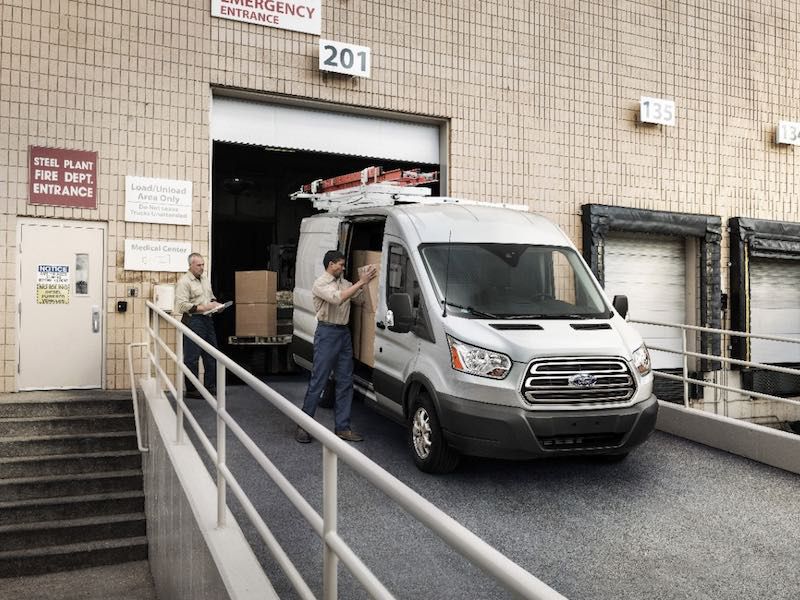
Photo by Ford